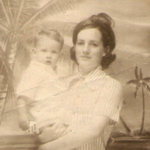
I didn't have a goose, but Uncle Mack above, said to use him again. :)
For several days we have gone back and forth on our city's electric and water rates for 1943. We have two 1943 electric bills but not from our town and we were just going to use them but we wanted to know more about here where we live.
So we had to go back in our research to 1935 to find what rates they set them at that time because that was the last time the city adopted a new rate. The next rate change was in 1944. During these years, the city had a very complicated way to rate electricity. They even stated that in the newspaper that it was complicated.
We did not give up though we wanted to know how much each kilowatt we use costs us for this 1943 history study.
So Charles stayed up past his bedtime tonight to help me type this part out because I do not understand this part, I am up past my bedtime too but I am now obsessed with trying to solve this.
This is the best guess that we can figure from many newspaper articles about the fees for electricity.
We are using 500 Kilowatt Hours for a month as our example
1943; The City Electric Department is going to charge us $1.00 minimum for 1 to 15 KWH. After the 15, they will charge us .03 cents up to 100 KWH. After the 100 KWH, they will charge us .02 cents per KWH. So for a demonstration purposes, say we used 500 KWH, we are going to be charged $1.00 for the first 15, then we are going to add $2.55 for the next 85 KWH, then we will be charged $8.00 for the remainder, which is 400 KWH. Adding these together we come up with $11.55 for 500 KWH. This does not include the tax. So then we add .58 cents for a 5% charge for tax. So we get a grand total of $12.13 a month, which would be $3.03 a week.
2022 based on the 500 Kilowatt hours used.
If we did these figures for today, 2022, our bill would be charged $12.00 for being a customer, then the KWH charge would be $43.55, which is .0871 cents per KWH. Tax on that would be $1.74 cents. Which brings it to a total of $57.29 for a month, which would be $14.32 per week.
During the great depression many people dropped electricity, per reading this in newspaper during the time this was happening, and they went back to oil lamps and the old way. The city needed these people back and during the Great depression in 1935 they adjusted the rates
The City was trying to get customers to use more electric and purchase electric water heaters and appliances from the city. So they gave two different rates, one was for people that purchased these electric hot water heaters and electric appliances and another rate that was higher for the people that did not have them. I did not like what I was reading. They set rates so the more you used the less they charged so you would feel that you could afford to purchase these new electric appliances, heaters, water heaters, refrigerators.
Then came along world war 2 and the city's rate discount for people that purchased electric water heaters and appliances could not work because there was a shortage due to the war and people could no longer purchase these appliances. In 1944 they had to adjust this to make it fair for everyone, those with the electric appliances and those without them.
During all of this bouncing around trying to find out what the rates were and when they changed them, we were stunned to find the cost of electric before the 1920s and during 1920s. It was very expensive! How can that be during this time? I had no idea that going backwards we would see higher rates. I read that it had dropped from 8.3 cent per kilowatt hour in 1918 to 6.55 cents per kilowatt hour in 1928. I do not know if there was a decrease between 1928 and 1935 but there was a big decrease in 1935.
In our home here in 2022, is all electric. Hot water heater, stove, air conditioning and heating, everything. We use more than that 500 KWH even with trying. But we are going to try more to get that down.
I do remember a time long ago, first married and I had nothing to plug in but a refrigerator, iron, and lights. The small stove was gas and there was a gas hot water heater. We did not have a radio or television nor a hair dryer and life was good. :) Our rent was $35.00 a month and we made very little money on military pay. I wrote home to my mother every week and we would go to a pay phone to make a long distant call when needed. We drove a 1955 ford, it was aqua blue and the dash was metal, not plastic and the seats went all the way across. I hand washed our clothes and went to the washateria only when we had some extra money and needed the blanket washed. We shopped once a month because that was how often we were paid.
I know from experience that we can live like this and without all these things we have today. My plan is to try and get our home to 1943, I know it cannot be just like it but close. I will enjoy my time figuring it all out and I hope you will too.
We have the water rates too so I will be back with that.
See you possibly tomorrow. Grandma Donna
